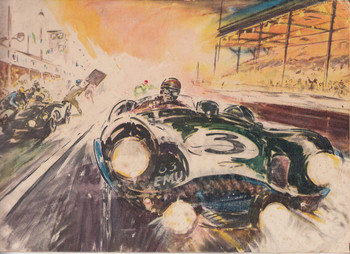Description
By: Jim Scaysbrook .
For eighteen years, the Castrol Six Hour Race was the biggest single event on the Australian motorcycling calendar. The race was for motorcycles in absolutely standard production trim, with no modifications whatsoever allowed — a genuine 'Showroom Shootout".
From the time that the committee of the powerful Willoughby District Motor Cycle Club coined the idea for the event, Castrol backed it. Initially the race was officially known as the Castrol 1000, as it carried $1,000 prizemoney for the winning team — an unprecedented figure for motorcycle racing in Australia. However the race's duration — six hours — would become the term by which it was universally recognised, and by the time the second event was run in October 1971, the Castrol Six Hour Production Race was the official title.
What made it so significant was that the inception of the event coincided with the biggest sales boom in motorcycle history, and that television discovered the event and turned it into a major sporting attraction in its own right. Throughout the race's history, Channel Seven and later ABC Television broadcast the event live to a national audience. Castrol also used the race to launch GTX, the brand that lubricated the majority of the field for many years.
The Castrol Six Hour Race was always run before a huge crowd, at Amaroo Park 1970-1983 and at Oran Park 1984-87. Commercial interest, from sponsors within and outside the motorcycle trade, was unprecedented. Many of the high-performance tyres fitted to motorcycles even today were originally developed in the Castrol Six Hour Race.
Some of the stars of the Castrol Six Hour Race went on to much greater things — notably Wayne Gardner, winner in 1980 and 1982 and later the 500cc World Champion, Mick Doohan, five times 500cc World Champion, and Grand Prix stars like Kevin Magee. Numerous international competitors raced in the Six Hour, most notably 9-times World Champion Mike Hailwood, and Grand Prix winners Mick Grant and John Kocinski.

























